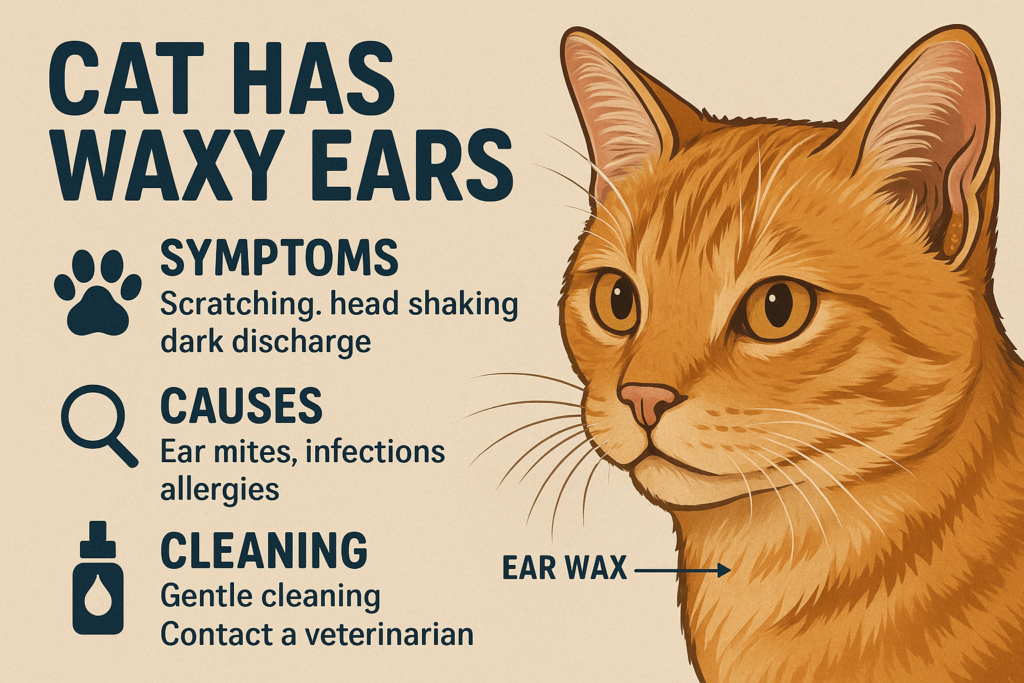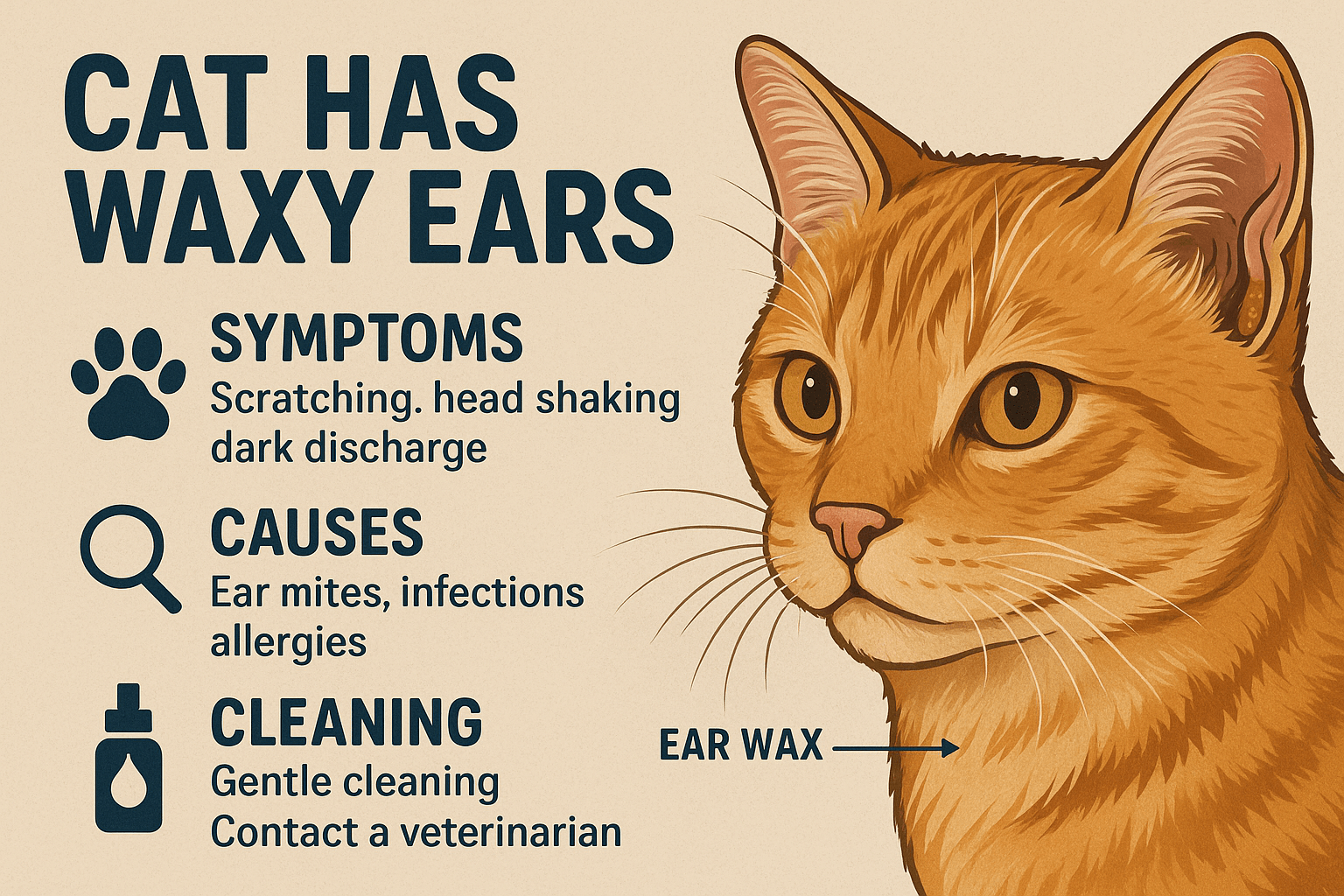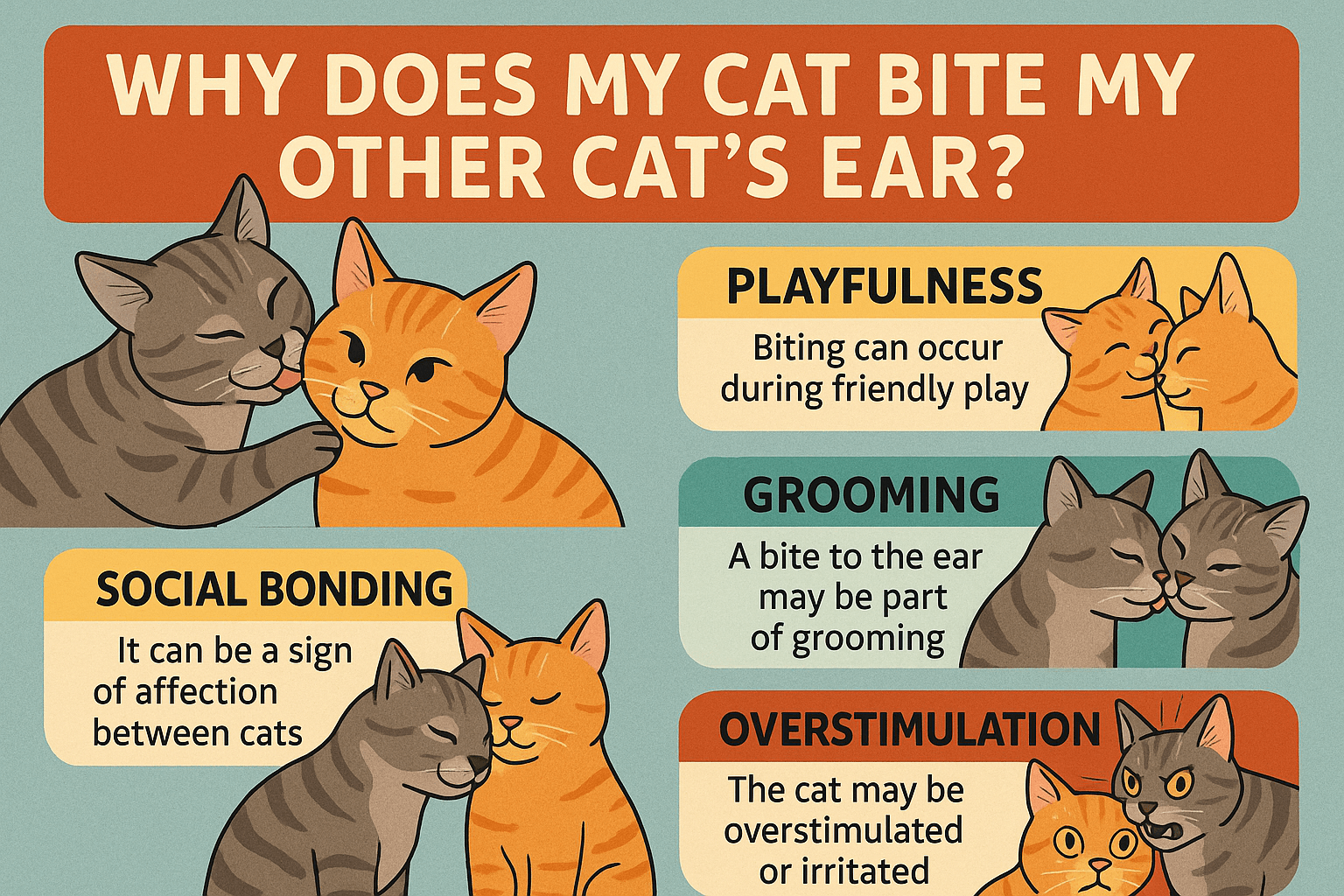Why Does My Cat Have Waxy Ears?
If you’ve noticed a waxy buildup in your cat’s ears, you might be wondering what it means and whether it’s cause for concern. While some ear wax is normal, excessive or unusual discharge can indicate underlying issues that require attention. Understanding the potential causes of waxy ears—ranging from infections to allergies—can help you determine the best course of action. In this blog post, we’ll explore everything you need to know about identifying, treating, and preventing waxy ears in cats to ensure their comfort and health.
Common Causes of Waxy Ears in Cats
Waxy ears in cats can stem from a variety of factors, each requiring different approaches to address. Identifying the root cause is essential for effective treatment.
Ear Mites:
These tiny parasites are a common culprit behind waxy, irritated ears in cats. They thrive in the ear canal and cause excessive wax production.Bacterial or Fungal Infections:
Bacterial or yeast infections often lead to abnormal ear discharge, including thick, waxy buildup that may have a foul odor.Allergies:
Food or environmental allergies can trigger inflammation and increased wax production as part of an immune response.Foreign Objects:
Small debris like grass seeds or dirt trapped in the ear can irritate the ear canal, leading to excess wax as the body tries to expel the object.Underlying Health Conditions:
Conditions like hypothyroidism or autoimmune diseases may affect ear health, resulting in persistent waxy buildup.
By pinpointing the specific cause, you can take targeted steps to address the issue and restore your cat’s ear health.

Signs Your Cat’s Waxy Ears Need Attention
While some ear wax is normal, certain signs indicate that your cat’s waxy ears require immediate care. Look out for these symptoms to prevent further complications.
Excessive Wax Buildup:
If the wax is unusually thick, dark, or discolored, it could signal an infection or parasite infestation.Frequent Scratching or Head Shaking:
Persistent scratching or head shaking suggests discomfort or irritation caused by the wax or its underlying cause.Unpleasant Odor:
A strong, unpleasant smell emanating from the ears often points to bacterial or fungal infections.Redness or Swelling:
Inflamed or swollen ear canals are a sign of irritation, infection, or allergic reactions.Behavioral Changes:
Cats with painful ears may become irritable, lethargic, or avoid being touched around the head.
Recognizing these warning signs early ensures prompt treatment and minimizes the risk of long-term damage to your cat’s ears.
Check this guide 👉Why Does My Cat Like Earwax? Best 7 Expert Tips!
Check this guide 👉Cat Ear Mites vs Wax: Best 7 Expert Tips!
Check this guide 👉Cat Ear Infection Symptoms: Best 7 Health Tips!
Preventive Measures for Healthy Ears | Treatment Options for Waxy Ears |
|---|---|
Regular ear cleaning with vet-approved solutions | Veterinary-prescribed ear drops for infections |
Monthly parasite prevention treatments | Anti-inflammatory medications for allergies |
Keeping ears dry during baths | Professional ear cleaning at the vet clinic |
Providing a clean, stress-free environment | Antibiotics for severe bacterial infections |
Monitoring for changes in behavior | Removal of foreign objects under sedation if needed |
How to Safely Clean Your Cat’s Ears
Cleaning your cat’s ears at home can help manage mild wax buildup and prevent future problems. Follow these steps to ensure a safe and effective process.
Gather Supplies:
Use vet-recommended ear cleaning solutions and cotton balls or pads. Avoid Q-tips, as they can push wax deeper into the ear canal.Restrain Your Cat Gently:
Wrap your cat in a towel or have someone assist you to keep them calm and still during the cleaning process.Apply the Cleaning Solution:
Squeeze a few drops of the solution into the ear canal and gently massage the base of the ear to loosen the wax.Wipe Away Excess Wax:
Use a cotton ball to gently wipe away any visible wax or debris. Do not insert anything deep into the ear canal.Reward Your Cat:
Offer treats or praise after the cleaning session to create positive associations and reduce stress.
With patience and care, regular ear cleaning can help maintain your cat’s ear health and prevent waxy buildup.
When to Visit the Vet for Waxy Ears
While minor wax buildup can often be managed at home, there are situations where professional veterinary care is necessary. Knowing when to seek help prevents complications.
Persistent Symptoms:
If the wax buildup doesn’t improve despite regular cleaning, consult your vet to rule out underlying conditions.Severe Discharge or Bleeding:
Any signs of blood, pus, or excessive discharge warrant immediate veterinary attention.Visible Pain or Aggression:
Cats showing signs of pain or aggression when touched near the ears may have a serious issue requiring medical intervention.Recurrent Problems:
Frequent ear issues could indicate chronic conditions like allergies or immune disorders that need specialized treatment.Difficulty Hearing:
If your cat seems less responsive to sounds or commands, it could indicate a blockage or infection affecting their hearing.
Prompt veterinary care ensures accurate diagnosis and treatment, safeguarding your cat’s overall well-being.
Preventive Care for Long-Term Ear Health
Preventing waxy ears starts with consistent care and attention to your cat’s environment and habits. These tips can help minimize the risk of recurring issues.
Schedule Regular Vet Check-Ups:
Routine exams allow your vet to monitor your cat’s ear health and catch potential problems early.Keep Living Spaces Clean:
Reducing dust, allergens, and pests in your home lowers the risk of ear irritation and infections.Provide a Balanced Diet:
Proper nutrition supports your cat’s immune system, reducing the likelihood of allergies and infections.Limit Exposure to Water:
Avoid letting water enter your cat’s ears during baths, as moisture can encourage bacterial growth.Use Parasite Prevention Products:
Regular flea and tick treatments protect against ear mites and other parasites.
Incorporating these practices into your routine promotes long-term ear health and reduces the need for frequent interventions.
Natural Remedies for Mild Ear Issues
For minor cases of waxy ears, natural remedies can complement professional care. However, always consult your vet before trying new treatments.
Apple Cider Vinegar Solution:
Diluted apple cider vinegar can help balance ear pH levels and deter bacteria or yeast.Coconut Oil Drops:
A small amount of coconut oil may soothe irritation and soften wax for easier removal.Aloe Vera Gel:
Pure aloe vera gel has anti-inflammatory properties that can calm irritated ears.Herbal Infusions:
Calendula or chamomile infusions can provide gentle relief for mild ear issues.Probiotics for Gut Health:
Supporting gut health with probiotics may reduce systemic inflammation linked to ear problems.
While natural remedies can be helpful, they should never replace veterinary advice for serious conditions.
Managing Stress Around Ear Care
Cats often associate ear cleaning with discomfort, making it challenging to establish a routine. These strategies can help reduce stress and build trust.
Start with Short Sessions:
Begin with brief interactions, gradually increasing the duration as your cat becomes more comfortable.Use Positive Reinforcement:
Reward your cat with treats, toys, or affection after each session to create positive associations.Approach Slowly and Calmly:
Move gently and speak softly to reassure your cat throughout the process.Create a Safe Environment:
Perform ear cleaning in a quiet, familiar space where your cat feels secure.Be Patient and Consistent:
Building trust takes time, so remain patient and stick to a regular schedule.
By prioritizing your cat’s emotional well-being, you can transform ear care into a stress-free experience for both of you.
Frequently Asked Questions About Waxy Ears in Cats
Is ear wax normal in cats?
Yes, some ear wax is normal, but excessive or unusual discharge may indicate a problem.
Can I use human ear cleaning products on my cat?
No, human products can irritate your cat’s sensitive ears. Always use vet-approved solutions.
How often should I check my cat’s ears?
Check your cat’s ears weekly for signs of wax buildup, redness, or irritation.
What causes black wax in cat ears?
Black, crumbly wax is often a sign of ear mites or dried blood from scratching.
Can I treat ear mites at home?
Over-the-counter treatments are available, but consulting a vet ensures proper diagnosis and treatment.
Prioritizing Your Cat’s Ear Health
Maintaining healthy ears is an essential part of your cat’s overall well-being. By staying vigilant for signs of waxy buildup and addressing issues promptly, you can prevent discomfort and more serious complications. Whether through routine cleaning, preventive measures, or professional care, taking proactive steps ensures your feline friend enjoys optimal ear health. Remember, a little attention goes a long way in keeping those adorable ears happy and wax-free!
Wet Food for Pregnant Cats: Best 7 Expert Tips! Discover essential advice on feeding wet food to pregnant cats, ensuring proper nutrition for mom and kittens. Learn what to look for and how to care!
Why Does My Cat Bite My Other Cats Ear? Best 7 Expert Tips! Discover reasons behind this behavior, how to interpret it, and expert advice to ensure harmony in your multi-cat household.
Somali Tabby Cat: Best 7 Expert Tips! Discover expert advice on caring for a Somali tabby cat, from grooming and health to personality and fun facts. Perfect for cat lovers!
Panacur Dosage for Cats: Best 7 Expert Tips! Discover safe and effective dosage guidelines, administration tips, and expert advice to keep your cat healthy and parasite-free with Panacur.





